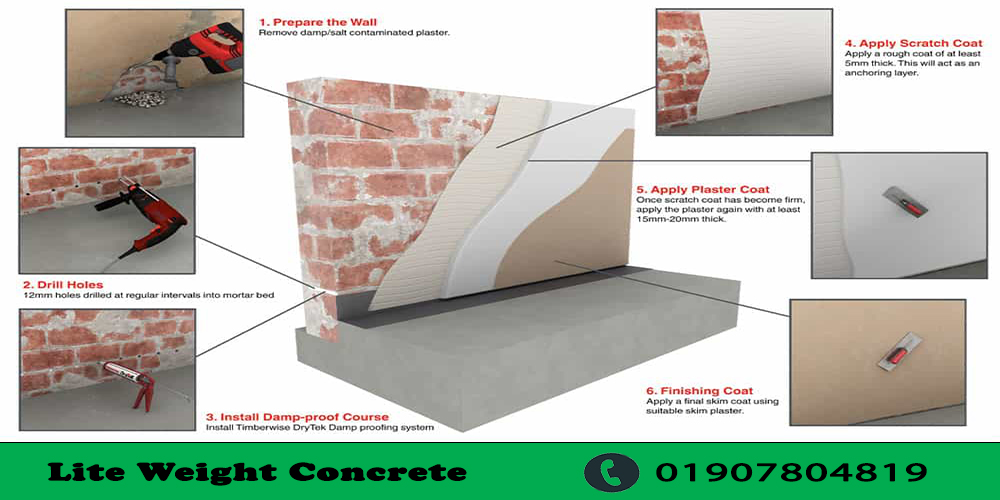Here is Exploring Effective Damp Proofing Techniques:
A Comprehensive GuideIn the realm of construction, the terms “damp proofing” and “waterproofing” are often used interchangeably, yet they bear distinct implications for foundation integrity. Damp proofing primarily focuses on preventing soil moisture, or dampness, from infiltrating a structure, whereas waterproofing extends its shield to protect against both moisture and liquid water. The need for either damp proofing or waterproofing is contingent upon various factors such as foundation level, soil conditions, rainfall, drainage, and construction methods.

Determining the Necessity of Damp Proofing:
The International Residential Code (IRC) stipulates that waterproofing is mandatory in areas characterized by high water tables or severe soil- water conditions. In regions where waterproofing isn’t mandated, damp proofing becomes essential for below-grade foundation walls and the parging of masonry walls. In areas with lower soil hydrostatic pressure, combining damp proofing with proper drainage and lawn grading is typically sufficient for providing durable protection..
Understanding the Mechanism of Damp Proofing:
Damp proofing commonly involves applying a coating, either sprayed on or rolled onto the external wall surface. A damp proof course acts as a barrier against rising damp, where water from the soil seeps upward into the foundation. Integral damp proofing can also be achieved by incorporating additives into the concrete mix, rendering the concrete itself water-resistant.
Effective Damp Proofing Methods
Liquid Wrap and Joint Filler:
Poly Wall Blue Barrier Liquid Wrap 2300, a silane-polymer resin, serves as an effective solution in this category. It can be applied directly over the substrate surface and penetrations after preparation with joint filler. This method provides a robust barrier, allowing sidings to be applied the day after installation.
Poly Wall Aluma Flash and Aluma Flash Plus
These materials, with a thickness of 40 mils, offer a formidable damp proofing solution using polyethylene foil. Aluma Flash Plus, a self-adhering modified asphalt membrane, boasts an exterior foil layer that provides extra UV protection to the concrete or substrate for up to 24 months.
Damp Proofing Rods:
Damp proofing rods, constructed from polymer silane/siloxane material, are a modern technology for addressing rising damp in existing walls. These rods, when inserted strategically, release water-repellent agents to counteract capillary action causing rising damp.
Membrane:
Lite Weight Concrete Membrane is an 85-mil waterproofing membrane/vapor barrier designed to prevent water and vapor transmission through concrete slabs on grade, also acting as a barrier to methane and radon gas.
Damp Proofing Tips and Recommendations:
Historically used methods like spraying tar on foundation walls are now discouraged due to harmful VOCs and material deterioration.
Ideal damp proofing materials are inert, emit no dangerous VOCs, can be applied in any weather, install efficiently, and have a long lifespan. Poly Wall waterproofing systems meet these criteria effectively.
Ensuring the longevity and efficacy of damp proofing requires proper preparation, including sealing penetrations and overlapping seams in sheet membranes. Regardless of the chosen method, whether roll-on, spray-on, sheeting, flashing, rods, or a combination, the key lies in selecting safe and effective damp proofing materials. For personalized advice or assistance, consult the experts at Lite Weight Concrete to make informed decisions for your next project.